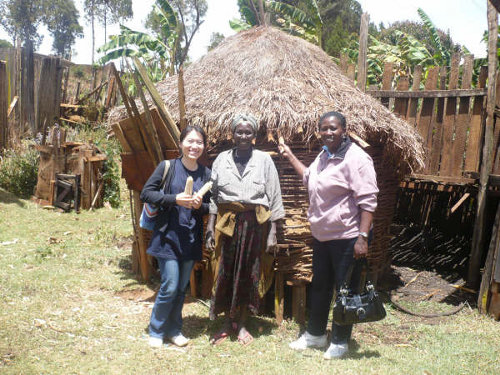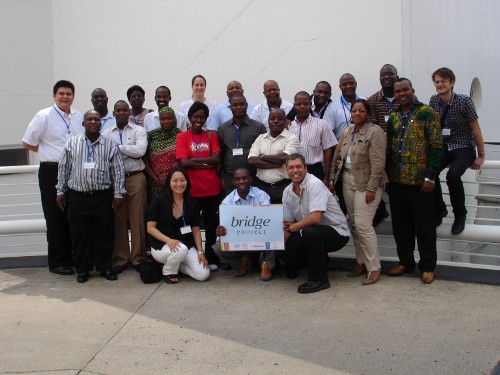Hiroshima Memo: Peacebuilding “by civilians, for civilians”
Apr. 15, 2009
by Akira Tashiro, Executive Director of the Hiroshima Peace Media Center
The word “peacebuilding” suggests a range of meanings. Generally speaking, there are three main phases to peacebuilding: conflict prevention, conflict resolution, and post-conflict reconstruction.
In all of these phases, the term “peacekeeping operations” (PKO) is often mentioned, but when we hear the expression PKO, we tend to think of “peacekeeping forces” (PKF). This is because U.N. troops carrying weapons and wearing “Blue Helmets,” which indicate PFK, stand out in conflict areas.
The development of human resources for peacebuilding is promoted in a number of countries in Asia and elsewhere, but many of the existing training programs are for soldiers to develop the skills necessary for peacekeeping operations. The two-year “Pilot Program for Human Resource Development in Asia for Peacebuilding,” commissioned by the Ministry of Foreign Affairs for implementation at Hiroshima University, was unique in that it focused on training for post-conflict reconstruction “by civilians, for civilians.”
This program, in aiming to develop human resources for peacebuilding, was an especially appropriate undertaking for the nation and a university that experienced the atomic bombing. The city of Hiroshima, fully reconstructed from the ashes of the atomic bombing, provides a valuable opportunity for trainees from other parts of Asia, as well as Japanese participants, to learn the horror of nuclear war and how Hiroshima was steadily revived as a city of peace. The growing network of former trainees who are actively at work in various areas of the world will also contribute to promoting peacebuilding.
Peacebuilding activities are not confined to U.N. peacekeeping operations. Japanese civilians may make up less than one percent of those involved in PKO, but there are also many young Japanese who are working hard with local people to promote peace in conflict and post-conflict areas as well as in developing nations. They include members of non-governmental organizations (NGOs) and the Japan Overseas Cooperation Volunteers dispatched by the Japan International Cooperation Agency (JICA). Despite the limited budgets of most of these NGOs, they are engaged in a variety of peacebuilding activities in a range of countries. Their activities constitute an important part of the international cooperation offered by Japan as a peaceful nation.
Kazuya Ito, who was a member of Peshawar-kai, an NGO headquartered in the city of Fukuoka, was working on an agricultural project in Afghanistan to turn desert into arable land through irrigation and plant seedlings that would suit the local environment. “The foundation of peace lies in sufficient food for everyone,” he had remarked. The death of this young man, who was shot dead by an armed group in August 2008 at the age of 31, is still fresh in our minds.
“As U.S. operations to root out Al-Qaeda and the Taliban increase in their intensity, civilian activities will become more difficult and we will face more danger,” says Dr. Tetsu Nakamura, 62, Executive Director of Peshawar-kai Medical Services, who has been giving medical and agricultural assistance in northwest Pakistan and Afghanistan for a quarter of a century. Dr. Nakamura’s concern should serve as a warning that a hasty dispatch of Japan’s Self Defense Forces to Afghanistan may not help Japanese civilians or the Afghan people.
By maintaining its stance to promote peacebuilding “by civilians, for civilians,” the peacebuilding program at Hiroshima University will gain growing support from A-bomb survivors and from the general public. Hiroshima University, as well as the Ministry of Foreign Affairs, which spend a substantial amount of taxpayer money on this program, must keep this aim in mind as they carry out their efforts. Through the university’s initiative, we have high hopes that the program will expand on its early success.
(Originally published on April 6, 2009)
Related articles
Hiroshima Peacebuilders Center training program shows good results (April 12, 2009)
To comment on this article, please click the link below. Comments will be moderated and posted in a timely fashion. Comments may also appear in the Chugoku Shimbun newspaper.
The word “peacebuilding” suggests a range of meanings. Generally speaking, there are three main phases to peacebuilding: conflict prevention, conflict resolution, and post-conflict reconstruction.
In all of these phases, the term “peacekeeping operations” (PKO) is often mentioned, but when we hear the expression PKO, we tend to think of “peacekeeping forces” (PKF). This is because U.N. troops carrying weapons and wearing “Blue Helmets,” which indicate PFK, stand out in conflict areas.
The development of human resources for peacebuilding is promoted in a number of countries in Asia and elsewhere, but many of the existing training programs are for soldiers to develop the skills necessary for peacekeeping operations. The two-year “Pilot Program for Human Resource Development in Asia for Peacebuilding,” commissioned by the Ministry of Foreign Affairs for implementation at Hiroshima University, was unique in that it focused on training for post-conflict reconstruction “by civilians, for civilians.”
This program, in aiming to develop human resources for peacebuilding, was an especially appropriate undertaking for the nation and a university that experienced the atomic bombing. The city of Hiroshima, fully reconstructed from the ashes of the atomic bombing, provides a valuable opportunity for trainees from other parts of Asia, as well as Japanese participants, to learn the horror of nuclear war and how Hiroshima was steadily revived as a city of peace. The growing network of former trainees who are actively at work in various areas of the world will also contribute to promoting peacebuilding.
Peacebuilding activities are not confined to U.N. peacekeeping operations. Japanese civilians may make up less than one percent of those involved in PKO, but there are also many young Japanese who are working hard with local people to promote peace in conflict and post-conflict areas as well as in developing nations. They include members of non-governmental organizations (NGOs) and the Japan Overseas Cooperation Volunteers dispatched by the Japan International Cooperation Agency (JICA). Despite the limited budgets of most of these NGOs, they are engaged in a variety of peacebuilding activities in a range of countries. Their activities constitute an important part of the international cooperation offered by Japan as a peaceful nation.
Kazuya Ito, who was a member of Peshawar-kai, an NGO headquartered in the city of Fukuoka, was working on an agricultural project in Afghanistan to turn desert into arable land through irrigation and plant seedlings that would suit the local environment. “The foundation of peace lies in sufficient food for everyone,” he had remarked. The death of this young man, who was shot dead by an armed group in August 2008 at the age of 31, is still fresh in our minds.
“As U.S. operations to root out Al-Qaeda and the Taliban increase in their intensity, civilian activities will become more difficult and we will face more danger,” says Dr. Tetsu Nakamura, 62, Executive Director of Peshawar-kai Medical Services, who has been giving medical and agricultural assistance in northwest Pakistan and Afghanistan for a quarter of a century. Dr. Nakamura’s concern should serve as a warning that a hasty dispatch of Japan’s Self Defense Forces to Afghanistan may not help Japanese civilians or the Afghan people.
By maintaining its stance to promote peacebuilding “by civilians, for civilians,” the peacebuilding program at Hiroshima University will gain growing support from A-bomb survivors and from the general public. Hiroshima University, as well as the Ministry of Foreign Affairs, which spend a substantial amount of taxpayer money on this program, must keep this aim in mind as they carry out their efforts. Through the university’s initiative, we have high hopes that the program will expand on its early success.
(Originally published on April 6, 2009)
Related articles
Hiroshima Peacebuilders Center training program shows good results (April 12, 2009)
To comment on this article, please click the link below. Comments will be moderated and posted in a timely fashion. Comments may also appear in the Chugoku Shimbun newspaper.









